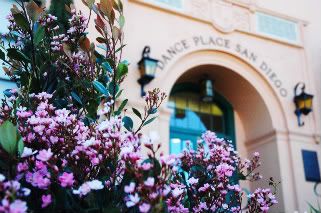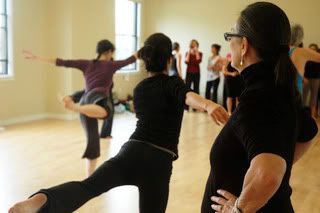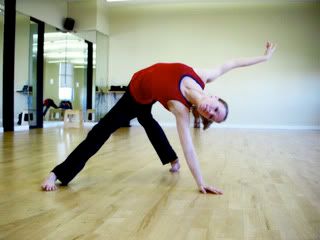 Tom Joad is of average stature, and working a lot in the fields has made him tan and strong. He is usually very dirty because of all the traveling he does with his family. In the beginning he doesn't have any scars but when he gets in a fight towards the end of the novel, it causes him to have this big scar across the side of his face. His outfits are not necessarily distinguishing because he clothes are the same as every other migrant worker; Dirty, old and slowly falling apart. His speech is the same as his whole family with a heavy southern accent which is hard to understand at times. His roles and in the novel is be a supporter of his family. He doesn't have a job throughout most of the book but when he does get work he makes sure to be as efficient as he can. Even though the Joad family is very religious he doesn't seem to care about it much. He is Ma and Pa Joad's favorite son. Tom is good-natured and thoughtful and makes do with what life hands him. Even though he killed a man and has been separated from his family for four years, he does not waste his time with regrets. He lives fully for the moment, which enables him to be a great source of vitality for the Joad family. As a guide and protector, Tom exhibits a moral certainty throughout the novel that inspires him with strength and resolve: he earns the respect of his family members as well as the workers he later organizes into unions. His whole life is a connection to history because he was immigrating to California with the thousands of others during the Industrial era when jobs were scarce because of all the big corporations and machineries. The character's name doesn't suggest much besides the fact that he is named after his father, and just like his father he takes on the responsible roles of a man. I believe Tom changed a lot throughout the novel because the situation caused him to mature. He stopped living the life as a boy and began to take the consequences for his actions and helping others instead of himself.
Tom Joad is of average stature, and working a lot in the fields has made him tan and strong. He is usually very dirty because of all the traveling he does with his family. In the beginning he doesn't have any scars but when he gets in a fight towards the end of the novel, it causes him to have this big scar across the side of his face. His outfits are not necessarily distinguishing because he clothes are the same as every other migrant worker; Dirty, old and slowly falling apart. His speech is the same as his whole family with a heavy southern accent which is hard to understand at times. His roles and in the novel is be a supporter of his family. He doesn't have a job throughout most of the book but when he does get work he makes sure to be as efficient as he can. Even though the Joad family is very religious he doesn't seem to care about it much. He is Ma and Pa Joad's favorite son. Tom is good-natured and thoughtful and makes do with what life hands him. Even though he killed a man and has been separated from his family for four years, he does not waste his time with regrets. He lives fully for the moment, which enables him to be a great source of vitality for the Joad family. As a guide and protector, Tom exhibits a moral certainty throughout the novel that inspires him with strength and resolve: he earns the respect of his family members as well as the workers he later organizes into unions. His whole life is a connection to history because he was immigrating to California with the thousands of others during the Industrial era when jobs were scarce because of all the big corporations and machineries. The character's name doesn't suggest much besides the fact that he is named after his father, and just like his father he takes on the responsible roles of a man. I believe Tom changed a lot throughout the novel because the situation caused him to mature. He stopped living the life as a boy and began to take the consequences for his actions and helping others instead of himself.Rose A Sharon
 The oldest of Ma and Pa Joad's daughters, and Connie's wife, she is an impractical and romantic young woman, Rose of Sharon begins the journey to California pregnant with her first child. She and Connie have grand plans of making a life for themselves in a city. The harsh realities of migrant life however soon throws away Rose of Sharon ideas. Her husband abandons her, and her child is born dead. By the end of the novel, she matures a great amount, and possesses her mother's impossible to defeat spirit and grace. Most of the clothing she wore were dresses that her mother would buy her. Her habit was a worrying habit, and being pregnant brought out the worst in that. It caused her to constantly assume the worst and pity herself. She also has a thick southern accent just like the rest of her family. Her role is society was the role of women and their difficulties when immigrating turns for the worst and breaks families apart. Rose of Sharon is religious and also very superstitious. She believed that the worst was out to get her baby and that because she had “sinned” she would go to hell. Her family loves her very much but with her constant complaining and self pity, it would annoy them as well. Her name is after a flower, and her mother loves the sound of it very much. She changed from the beginning of the novel as a childish and dreamy teenage daughter who develops as the novel progresses to become a mature woman. She symbolizes regrowth when she helps the starving stranger.
The oldest of Ma and Pa Joad's daughters, and Connie's wife, she is an impractical and romantic young woman, Rose of Sharon begins the journey to California pregnant with her first child. She and Connie have grand plans of making a life for themselves in a city. The harsh realities of migrant life however soon throws away Rose of Sharon ideas. Her husband abandons her, and her child is born dead. By the end of the novel, she matures a great amount, and possesses her mother's impossible to defeat spirit and grace. Most of the clothing she wore were dresses that her mother would buy her. Her habit was a worrying habit, and being pregnant brought out the worst in that. It caused her to constantly assume the worst and pity herself. She also has a thick southern accent just like the rest of her family. Her role is society was the role of women and their difficulties when immigrating turns for the worst and breaks families apart. Rose of Sharon is religious and also very superstitious. She believed that the worst was out to get her baby and that because she had “sinned” she would go to hell. Her family loves her very much but with her constant complaining and self pity, it would annoy them as well. Her name is after a flower, and her mother loves the sound of it very much. She changed from the beginning of the novel as a childish and dreamy teenage daughter who develops as the novel progresses to become a mature woman. She symbolizes regrowth when she helps the starving stranger.Ma Joad
 As the mother of the Joad family, Ma is introduced as a woman who knowingly and gladly fulfills her role as “the citadel of the family.” She is the family's healer and the settler of their arguments, and her ability to perform these tasks grows as the novel progresses. Ma is described as being not skinny but not fat either, short of stature, and curly hair. Just like her daughter she mainly wears dresses whenever shes out. Her habits change through the book from at first being the quiet women who let the men do the leading, to the one in charge and making decisions. The whole family love her but her husband is always upset at how he feels like he isn't in charge anymore. Ma Joad emerges as the family's center of strength over the course of the novel as Pa Joad gradually becomes less effective as a leader and provider. She is embedded in history because she was one of the first women who started taking things into their own hands and having a say in the matters instead of only men. Her real name is never revealed in the story she was always referred as Ma. Ma displays a startling capacity to keep herself together, and to keep the family together, in the face of great turmoil. Like the time when the family was crossing the California dessert. Here, Ma suffers privately with the knowledge that Grandma is dead, riding silently alongside her corpse so that the family can complete its treacherous journey. She consistently proves to be the novel's strongest supporter of family and togetherness.
As the mother of the Joad family, Ma is introduced as a woman who knowingly and gladly fulfills her role as “the citadel of the family.” She is the family's healer and the settler of their arguments, and her ability to perform these tasks grows as the novel progresses. Ma is described as being not skinny but not fat either, short of stature, and curly hair. Just like her daughter she mainly wears dresses whenever shes out. Her habits change through the book from at first being the quiet women who let the men do the leading, to the one in charge and making decisions. The whole family love her but her husband is always upset at how he feels like he isn't in charge anymore. Ma Joad emerges as the family's center of strength over the course of the novel as Pa Joad gradually becomes less effective as a leader and provider. She is embedded in history because she was one of the first women who started taking things into their own hands and having a say in the matters instead of only men. Her real name is never revealed in the story she was always referred as Ma. Ma displays a startling capacity to keep herself together, and to keep the family together, in the face of great turmoil. Like the time when the family was crossing the California dessert. Here, Ma suffers privately with the knowledge that Grandma is dead, riding silently alongside her corpse so that the family can complete its treacherous journey. She consistently proves to be the novel's strongest supporter of family and togetherness.The patterns I notice about the characters is that they all immensely matured throughout the novel. Tom and Rose A Sharon grow up to the adults they become, and Ma begins to stand up for herself. The conclusion that this leads me towards is a better realization of the climax. That there isn't a specific one because the book is about life. Life has its ups and downs but never one single climax. In the book they all mature and grow as the story continues, just like in real life which works perfectly because its true.








